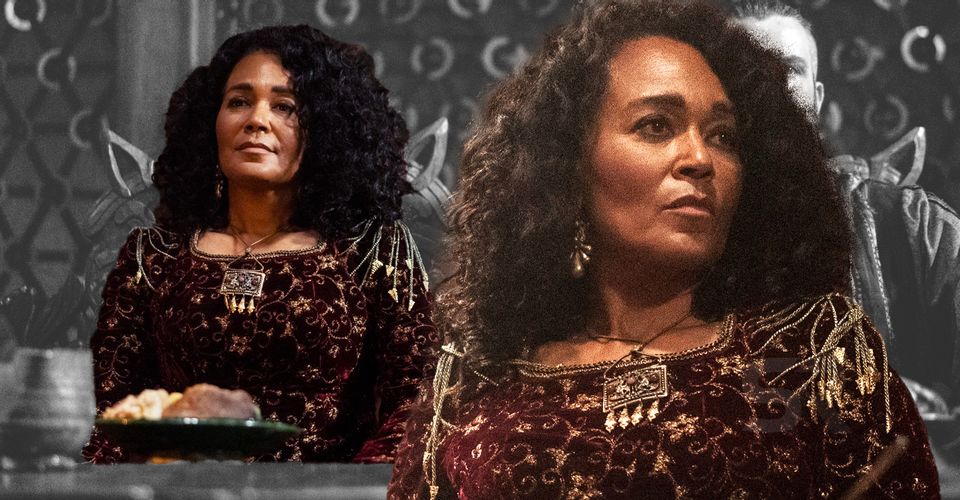Jarl Haakon True Story: Was There Really A Black Viking Ruler?

Warning: spoilers for Vikings: Valhalla season 1
Vikings: Valhalla follows a new group of characters, among those Jarl Haakon, the current ruler of Kattegat – but was she a real person and was there really a Black Viking ruler? Historical dramas have become very popular in recent years, and one of the most successful TV shows from this branch is Vikings. Created by Michael Hirst, Vikings premiered on the History Channel in 2013 and lived on for a total of six seasons, coming to an end in 2020. However, six seasons weren’t enough to cover the most notable stories from the Viking Age, and a sequel series, titled Vikings: Valhalla, was announced in 2019.
Vikings explored the early years of the Viking Age, beginning with the Lindisfarne raid, and the series was initially led by legendary Norse warrior Ragnar Lothbrok (Travis Fimmel). As the series progressed, it shifted its focus to Ragnar’s sons – Björn, Ivar, Ubbe, Hvitserk, Sigurd, and Ivar – and their own journeys, becoming the protagonists after Ragnar’s death in season 4. Vikings brought the arcs of all its characters to a full end, making way for new characters and stories from another era from the Viking Age in Vikings: Valhalla.
Set over a century after the events of Vikings, Vikings: Valhalla follows Leif Erikson (Sam Corlett), Freydís Eiríksdóttir (Frida Gustavsson), and Harald Sigurdsson (Leo Suter), who embark on a journey that takes them across oceans and battlefields, from Kattegat to England, to the Pagan temple in Uppsala and beyond. Vikings: Valhalla features some historical events (like the St. Brice’s Day massacre and the fall of the London Bridge), real-life characters, and others that are adaptations of historical figures. Such is the case of Jarl Haakon (Caroline Henderson), ruler of Kattegat during the events of Vikings: Valhalla season 1, and the first Black Viking ruler in the universe of Vikings, and who appears to be a gender-swapped version of Haakon Ericsson.

Jarl Haakon explained in Vikings: Valhalla that she took over the leadership of Kattegat after her husband was killed by Christians, as he refused to abandon his pagan beliefs. Haakon took Freydís under her wing, leading her to Uppsala to discover her destiny and letting her train as a shieldmaiden. Unfortunately, Haakon was killed during the attack by Jarl Kåre (Asbjørn Krogh Nissen) and Olaf Haraldsson (Jóhannes Haukur Jóhannesson), leaving her spot as ruler of Kattegat open. Now, Jarl Haakon is said to be based on Haakon Ericsson, Earl of Lade. His mother is believed to have been Gytha, daughter of Sweyn Forkbeard and half-sister of Canute. He ruled as a Danish vassal from 1012 to 1015 until Olaf Haraldsson returned and declared himself king. Haakon fled to England, where Canute made him Earl of Worcester, and he died in a shipwreck in the Pentland Firth, in late 1029 or early 1030.
When it comes to the role of women during the Viking Age, in most cases they were subordinate to their husbands and fathers and had little political power, but there are many sources that portray them as having a lot more freedom than in other cultures. Women had the right to inherit part of their husband’s property upon his death, and even the paternal aunt, paternal niece, and paternal granddaughter had the right to inherit from a deceased man. A woman with no husband, sons, or male relatives could also inherit property as well as the position as head of the family when her father or brother died. Women also had religious authority, were poets, rune masters, medicine women, entrepreneurs, and might have been active within military office. However, there isn’t evidence of a female Viking ruler, though, with all that in mind, there might have been some. It’s to be seen if Freydís or someone else will take Jarl Haakon’s place as Kattegat’s ruler in Vikings: Valhalla season 2, and it’s a shame that she was only around for one season.
About The Author


















